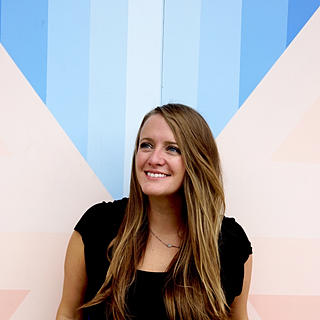What Intersectionality Actually Means in Mental Health
- Terri K. Lankford, LPCS
- Jun 16
- 4 min read

In the therapy room, we talk a lot about identity. Who we are, where we come from, what has shaped us, and what stories we’ve had to carry to survive. These conversations aren’t just clinical - they’re personal, layered, and intimate. And for many people, the challenge isn’t simply naming one part of themselves, but learning how to hold all of who they are with compassion.
That’s where intersectionality comes in. Coined by professor and civil rights theorist Kimberlé Crenshaw, the term describes how systems of oppression (like racism, sexism, classism, and homophobia) interact and overlap. For example, a Black queer woman may face discrimination that’s not just racist or sexist, but uniquely shaped by both. Intersectionality helps us understand how these layered experiences impact a person’s mental health, safety, and access to care.
We’re talking about this now because June brings two powerful reminders of identity and liberation: Pride Month and Juneteenth. Both celebrate freedom, community, and resistance, but they’re often held in separate conversations. For those who are Black and queer, or who hold other intersecting identities, that separation can feel like a split within the self. This post is an invitation to hold the full complexity of who people are and to explore what that means for healing.
So, what do you need to know about intersectionality in the mental health realm? Read on for more info from the holistic healers at Rise and Thrive Counseling!
1. Understand That Identity Isn’t One-Dimensional
Too often, mental health care treats identity like a checkbox: race, gender, sexuality, etc. But in real life, these identities don’t exist in isolation; they’re deeply intertwined. Recognizing this complexity is essential for meaningful healing.
To put intersectionality into action, you can:
Reflect on how your identities intersect and shape your experience of safety, stress, or belonging.
Avoid assumptions: one person’s experience as a queer person or a Black person will differ greatly depending on their other identities (immigration status, disability, religion, etc.).
Look for approaches that make space for nuance when seeking or giving care, not overly generalized ideas of “what Black clients need” or “how to affirm queer folks.”
Use curiosity instead of categories. Ask open-ended questions about how a client identifies and how that impacts their worldview.
Acknowledge when someone's story doesn't fit mainstream narratives. That’s often a sign you’re hearing something that needs more space, not less.
2. Validate the Impact of Intersecting Oppressions on Mental Health
Mental health symptoms don’t occur in a vacuum. They're often responses to chronic stressors like racism, homophobia, ableism, or poverty. When these oppressions stack, their effects on the nervous system, self-concept, and relationships become more complex.
In the therapy room, acknowledge the role of oppression in intersectionality by:
Recognize that chronic vigilance, burnout, and self-doubt may be survival responses, not pathology.
For BIPOC LGBTQIA+ folks, therapy may involve untangling internalized messages from multiple systems (e.g., “I’m too much,” “I don’t belong anywhere”).
Consider how systemic barriers affect access to rest, safety, and support, and name them in the therapy room.
Don’t downplay how painful microaggressions or historical trauma can be, even if they’re “not new.”
Healing must include not only personal insight, but a critique of the systems that harm people for simply existing.
3. Make Space for Whole-Person Healing
Holistic mental health means holding space for all parts of someone’s identity and not forcing them to leave any part outside the therapy room. It also means expanding our understanding of what healing can look like.
To make space for intersectionality in the mental health healing process, you can:
Invite yourself and others to bring in cultural and spiritual practices that nourish them during the mental health healing process - whether that’s prayer, poetry, protest, or ancestral rituals.
Don’t expect “neutrality” or “professionalism” to mean assimilation. Healing should look like liberation, not erasure.
Acknowledge the deep power of chosen family, community care, and joy in marginalized communities.
Encourage practices that restore agency in the body and mind, especially when the world has tried to take that agency away.
Ask yourself and others what liberation feels like - not just symptom relief.
Four Resources to Learn More About Intersectionality
"Mapping the Margins" by Kimberlé Crenshaw: The original 1991 academic paper where the term intersectionality was first introduced. A foundational read for anyone wanting to understand the concept's legal and social roots.
The Nap Ministry – Tricia Hersey (@thenapministry): A powerful voice on rest as resistance, Hersey’s work sits at the intersection of race, capitalism, and healing. Her content is deeply intersectional, centering Black bodies, rest, and liberation.
"Sister Outsider" by Audre Lorde: This collection of essays and speeches explores the intersections of race, gender, sexuality, and power through a poetic and activist lens. Audre Lorde is a powerful figure in both Black and LGBTQIA+ activist writings!
Therapy for Black Girls Podcast: Hosted by Dr. Joy Harden Bradford, this podcast often discusses intersectional topics related to Black women’s mental health, identity, and access to care.
Speaking of resources: if you want more holistic help, look no further than Rise and Thrive Counseling. Our holistic counselors can help address all areas of life. Reach out today to learn more. We look forward to hearing from you!











Comments